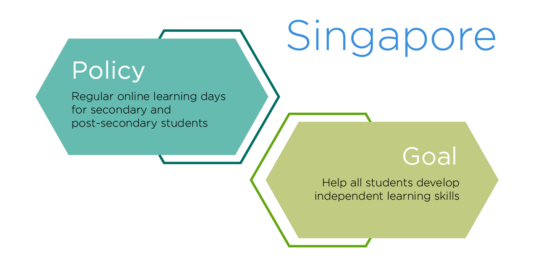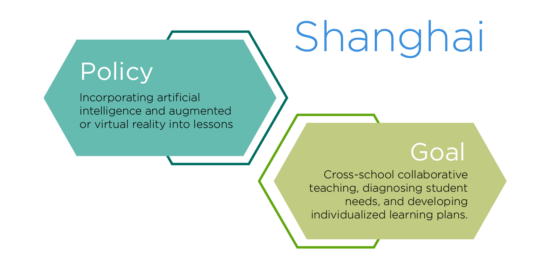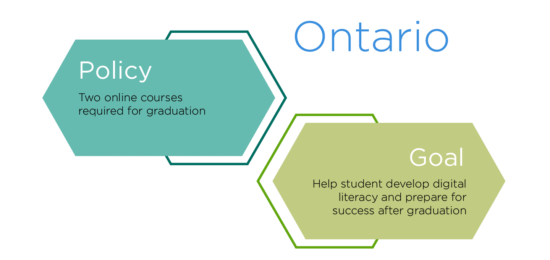The pandemic has sparked widespread acknowledgment of the importance of in-person learning, the value of teacher-student relationships and the role of schools as a social hub for students, families, and communities. But that appreciation of in-person interactions does not mean that top-performing systems have just shifted back to the “old normal” as in-person learning resumes. Instead, they are taking lessons from the pandemic to strengthen their systems by incorporating more digital learning to complement in-person schooling. Some examples are:

Singapore implemented a policy requiring regular online learning days twice a month for all secondary and post-secondary students. The goal is to develop independent learning skills for all students. Along with this requirement, Singapore built out its already existing student learning space (SLS) which is an online learning portal providing access to quality curriculum-aligned resources in all major subjects from primary to pre-university level. It was designed to enable students to engage in different learning modes, including self-directed and collaborative learning. Teachers can also use the SLS to design collaborative lessons for students. In addition, Singapore has begun to pilot an AI-enabled automatic marking system to provide individual feedback to students and to free up teachers to focus on providing support to students.

Shanghai announced a digital transformation plan for the province that will involve developing 100 “benchmark schools” to pilot and refine new digital teaching and learning experiences. These will include immersive lessons incorporating augmented or virtual reality, so students can “visit” biomes or explore the insides of cells, for example. Technology will facilitate cross-school collaborative teaching and peer-to-peer feedback conducted over the web. Artificial intelligence will diagnose student needs and develop individualized learning plans. Students and teachers will be able to access a unified digital infrastructure for tracking assessment results, grades, credentials, extracurriculars and parent-school interactions.

Ontario’s Ministry of Education will require secondary school students to take two online courses to graduate starting next school year. The goal is to support the development of digital literacy and prepare students for success after graduation. As part of this plan, the government unveiled a new site for online learning and previewed courses that will be offered next year. The province has also almost completed its Broadband Modernization Program, which will ensure connectivity in all schools before the requirement takes place.
These new policies show how new approaches to fostering digital literacy, integrating new forms of technology into instruction and feedback, and more immersive digital learning environments are emerging from the pandemic. Even as American educators and students celebrate the return to in-person learnings, they would do well to explore these examples. For more about how high-performing systems design their education systems see NCEE’s profiles of top-performing education systems.




